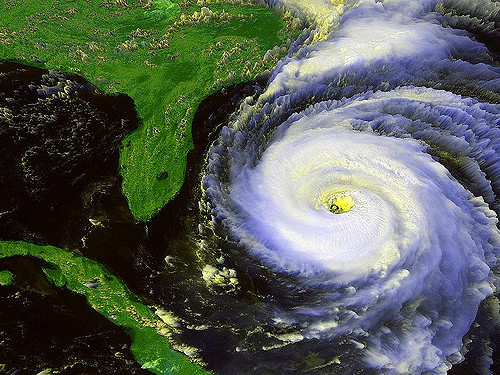Hurricane season begins June 1 and ends November 30, but the time to prepare for a hurricane is now — even if there is not a cloud in the sky. Be ready. Have a plan to evacuate and have supplies to ride out the storm. What supplies you will need, how you will receive information about the storm and how you will reach family members outside the storm are just a few of the considerations. We’ll show you how to prepare for a hurricane, so you and your loved ones are safe during this natural disaster.
Quick Navigation
What Is a Hurricane?
Hurricane Development
Why Hurricanes Form
Signs of an Upcoming Hurricane
Watch the Sea
Feel the Pressure
The Sky Knows
More Rain
How to Prepare for a Hurricane?
Water
Food and Medicine Supply
Safety Items
Fill Up
Fortify Your Home
Gather Your Paperwork
Evacuate
Communicate
After the Hurricane
Prevent Carbon Monoxide Poisoning
Flood Safety
Conclusion
What Is a Hurricane?
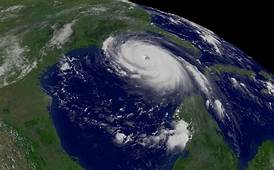
A hurricane is large, swirling storms that form over warm water in the oceans. It can produce high winds, torrential rains and a wall of water, or storm surge. Winds can reach over 150 mph, and when the storm reaches land, it can tear apart buildings, toppled trees and send debris flying. The rain and storm surge can cause catastrophic flooding.
There are five categories of hurricanes based on the Saffir-Simpson Hurricane Scale.
- Category 1: Winds 119-153 km/hr (74-95 mph)
- Category 2: Winds 154-177 km/hr (96-110 mph)
- Category 3: Winds 178-208 km/hr (111-129 mph)
- Category 4: Winds 209-251 km/hr (130-156 mph)
- Category 5: Winds more than 252 km/hr (157 mph)
Hurricanes have several parts, how to prepare for a hurricane can depend on what part you are in. The eye is the hole at the center of the storm. Winds are light in this area. This is the calmest part of the storm. The eyewall is the ring of thunderstorms surrounding the eye. The eyewall has the strongest winds, and heaviest rain, which makes is a dangerous part of the storm. Rain bands are the clouds and rain that swirl out from the hurricane’s eyewall. The rain bands span for hundreds of miles and can produce thunderstorms and tornadoes.
Hurricane Development
A hurricane usually starts as a tropical disturbance over tropical or subtropical ocean waters. As the disturbance strengthens, it becomes a tropical depression. This is an area of rotating thunderstorms with maximum sustained winds of 62 km/hr (38 mph). If the sustained winds reach 63 km/hr (39 mph), the tropical depression is a tropical storm. The storm reaches hurricane status if its winds reach 119 km/hr (74 mph).
Since 1953, the National Hurricane Center has been naming storms. There are six lists of names that rotate every year. If a storm is particularly damaging the name is not used again. Katrina would be an example of this.
Why Hurricanes Form
Hurricane experts are not sure what or why a hurricane forms, but conditions that make a hurricane highly likely include warm water and wind. Warm ocean waters of at least 79 degrees Fahrenheit (26 Celsius) give the storm its energy to grow into a hurricane. Winds that blow at a constant speed and direction give the storm a shape.
Signs of an Upcoming Hurricane
Hurricanes can take days or weeks to form. Even though this sounds like plenty of time to prepare, keep in mind that millions of other people are buying supplies, gassing up their vehicles and taking the same evacuation routes. Time plays a key role in how to prepare for a hurricane, The earlier you can put your plan into action, the more likely your plan will succeed. Waiting until a hurricane’s landfall is imminent is too late. So what are the signs of an upcoming hurricane?
Watch the Sea

About three to four days before hurricane landfall, you will see a swell of 3 to 6 feet. The waves will strike the shore every 6 to 9 seconds. The closer the storm gets, the bigger the swell will be, and the faster the waves will come in.
Feel the Pressure

About three days before the storm makes landfall, the atmospheric pressure is stable. The pressure begins to fall 36 hours before landfall.
The Sky Knows

About 72 hours before landfall, the sky is dotted by cumulus clouds. The cirrus clouds are visible in the sky 36 hours before the hurricane.
The intense bands of clouds of the storm that bring heavy rains can be seen 12 hours before landfall.
More Rain

Rain moves in around 18 hours ahead of the hurricane. Expect a driving rain that falls intermittently, increasing as the hurricane gets closer to land. Then it becomes a constant downpour about 6 hours before a hurricane hits.
How to Prepare for a Hurricane?
Whether you evacuate or ride the storm out will determine how to prepare for a hurricane. We’ll look at the preparations needed for both strategies.
Water

Have at least 5 gallons of water per person (which should last 3 to 5 days) and clean containers for water. You’ll also want to have iodine tablets or chlorine bleach to make your drinking water safe during and after the storm.
Food and Medicine Supply

Put together a 3 to 5 day supply of food that doesn’t go bad such as:
- Canned food
- Peanut butter
- Crackers
- Cereal
- Apples
- Dried Fruit
- Bread
When thinking about how to prepare for a hurricane, have enough baby food (or formula). Pet food should also be part of your plan. Gather any prescription medicines. Make sure you have enough to get through a week. If prescriptions need filling, fill them as soon as you can be the storm hits.
Safety Items
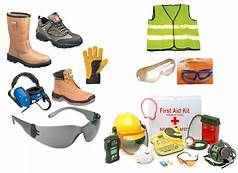
These are items that you should already have on hand during a regular power outage. But if you don’t have a kit, this is one of the most important items if you’re wondering how to prepare for a hurricane quickly. Store the items in a large plastic tub or 5-gallon bucket and label the container. Make sure you know where your kit is. Items that should be in the emergency kit are:
- First aid kit and instructions
- Fire extinguisher
- Battery-powered radio
- Flashlights
- Extra batteries
- Sleeping bags or extra blankets
- Hand sanitizer
- Wet cleaning cloths (like baby wipes) in case you don’t have clean water
- Soap
- Toothpaste
- Tampons and pads
- Diapers
Fill Up

Fill your car’s gas tank. A few days from the storm, charge your devices and keep them charged. Fill up your bathtub with clean water and set your freezer to the coldest setting. If there is a power outage, open your fridge only when necessary in order to keep the food cold for as long as possible.
Fortify Your Home

Secure patio furniture, trash cans and other items that could become flying debris during the storm. Put up plywood that’s at least of 5/8-inch thick over your windows. Get familiar with how to turn off the water, natural gas, and electricity to your home. Check your insurance coverage and be clear on the type of coverage you have and what is covered.
Gather Your Paperwork
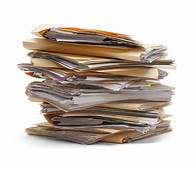
Find your important documents and put them in a portable, waterproof container you can take with you if you need to evacuate. Make sure you backup items on your computer and phone. Make sure they are not in harm’s way if your roof leaks or there’s flooding.
Evacuate

If your strategy is to evacuate, or you are part of a mandatory evacuation, go as early as possible. Determine where you are going — a friend’s house, hotel, storm shelter — and make reservations before they fill up. Make sure your friend will be agreeable for having you at their home for at least a week if catastrophic flooding occurs.
Communicate

Determine how you will get emergency notifications — radio, text. Etc. Tell family and friends your plan to stay or go and how they will be able to reach you.
After the Hurricane
You’ve learned how to prepare for a hurricane, but what about after? After the storm eases, there are still hazards to be aware of and avoid, especially if you are in your home. Never use a wet electrical device. If it’s still plugged in, turn off the power at the main breaker. If the power is out, stick with flashlights, not candles. When you venture outside, use caution near damaged buildings. Keep in mind that hurricanes can damage buildings and make them unsafe. Leave your home immediately if you hear the building shift.
Prevent Carbon Monoxide Poisoning
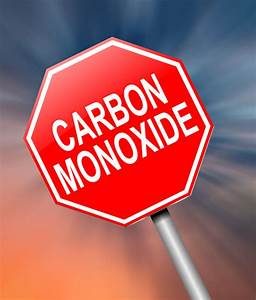
Gas or coal-burning creates carbon monoxide. Generators, pressure washers, charcoal grills, and camp stoves all emit this deadly gas. You can’t smell it or see it. Never use gas or coal-burning equipment inside your home, basement, or garage. Never heat your home with a gas oven. Get a battery backup carbon monoxide detector to alert you to carbon monoxide in your home.
Flood Safety
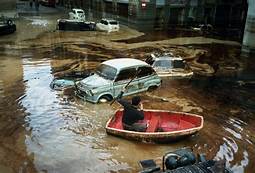
One of the biggest hazards of a hurricane is flooding. Never try to drive through a barricade and heed all warnings about flooded roads.
If in or near floodwater, wear a life jacket and wash your hands after touching it to avoid germs. Flood water also brings mosquitoes that carry diseases like Zika and West Nile virus.
Conclusion
Hurricanes are massive, terrifying storms that can devastate communities. Your survival depends on if you know how to prepare for a hurricane. It’s time to get ready for the next storm. Formulate a plan, gather your supplies, and you’ll be glad you did if and when a hurricane strikes.

